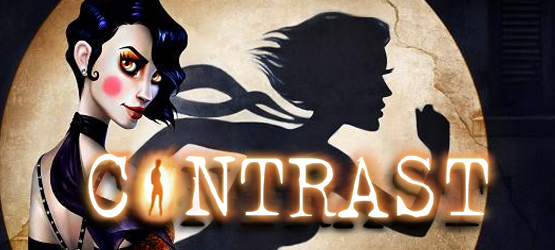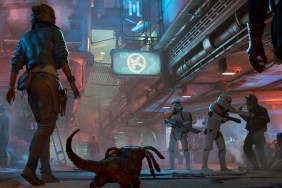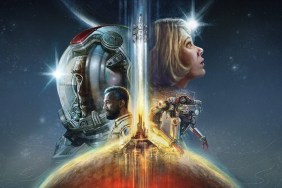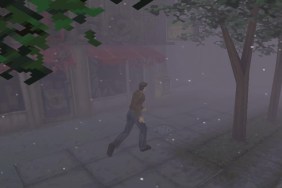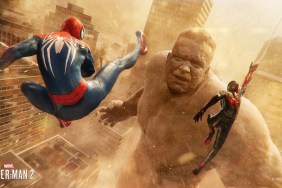While at PAX Prime 2013, PSLS’ Dan Oravasaari got to sit down with Creative Director, Guillaume Provost, for the upcoming PS3 and PS4 game, Contrast.
Where did the concept for Contrast come from?
Originally, I came up with the game mechanics first. I had been lucky enough to work at a place called Arkane Studios, in Lyon and we had worked very closely with Valve when they released The Orange Box. So, Portal was one of the very early inspirations for the game and I wanted to develop a mechanic that played with space at the time. That was the basic premise that we came up with.
When I came up with the mechanic, we started growing the team around it and started debating on what the starting context of story would be for the type of game that we wanted to do. I was looking for a context that would really marry the game mechanic well, and film noir was a natural set for it, because they used photography and shadows to tell stories.
I am a single dad, I have two daughters, so having a little girl featured in the game was very important to me personally and I was very inspired by Pan’s Labyrinth as a movie. In the terms of the type of narrative arch I wanted to build, just our project isn’t as dark as Pan’s Labyrinth.
What kind of rating were you shooting for when developing Contrast?
We are already rated actually, we have a Teen rating.
From the short demo I got to play through, I didn’t notice any other player characters in the game, will this be a normal factor throughout the whole game?
Yeah, you play as the imaginary friend of a little girl. So, you live in your own side of reality, that is something we wanted to carry through the game. You do effect the world in some ways, you play an important role in the story that unfolds. I don’t want to give any spoilers there, but the idea is that, in the same way that the characters are a part of the cast outside of the little girl, who don’t see you, you only see them through their shadows. In certain cases you have to bring the light to scenes to reveal the character and the sequences that are going to happen.
As an independent studio, and with the growing number of independent titles hitting consoles, do you think this is the best time to working within the indie scene?
Yeah, it’s funny, because when I started the studio, four and a half years ago, we were already seeing a little bit of a renaissance with Limbo and Braid showing the independent spirit bulging up again and the idea of being able to digitally distribute our titles for the first time.
I have been an indie for 16 years and it is a much better time to be an indie today than it used to be when we had to do packaged goods. So, I think it is very exciting time to be an indie, but on the flip side to there is a couple of funny things that happen during development of a project, certain things that look normal today are really risky back then. When I originally pitched the project to publishers, I got a lot of push back on the idea of having a woman help a little girl, and then, The Last of Us came out most recently, and Clementine [from The Walking Dead] is another example of having the concept of family and helping children in games not be so weird after all. So, we seem to be hitting a lot of good notes at the same time but some of it is entirely chance.
From the standpoint of making games as an indie, it is really an exciting time, you don’t have to be 50 people in a studio, making a packaged project you have to send to the store. You can reach out directly to your consumer and make smaller but more commercially risky games.
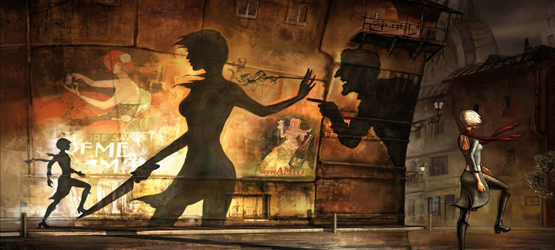
From my understanding, Contrast has a very complicated publishing situation, as on the PS3 and Xbox 360 you have a publisher, but for the PS4 you are self-publishing, what about the Xbox One?
Well, we are looking into it, but at the moment we don’t have any dates or plans that are directed towards it, we have to speak with Microsoft about that.
Why do we have that, because we can have our cake and eat it too. What it came back to is we wanted to have the support of the publisher to build the momentum that we wanted for the games development process. We were in a pretty good position when we negotiated, so I was able to retain the rights to self-publish on other platforms.
What has it been like to do a self-published title with Sony?
It’s been great! I can go on about it, but they have been really supportive of indies but also of us specifically. Sony approached us originally actually, and asked us even though they knew we already had plans for other platforms, so they said they knew ‘we can’t have you guys as exclusive, but would you be willing to wait until we launch the PlayStation 4?’
For us, it was an obvious decision on our side, because we didn’t want to release a product in the middle of the wave of the next-generation and this was a way for us to coast the wave instead of getting buried by it. So we said yes, and they have been helping us ever since. These are Sony TVs, the public is all playing on PS4’s right now [at PAX Prime 2013], they helped us set up the booths, the helped us get the word out to journalists. Its a win-win situation, they have been really good partners. But at the same time, we want as many people as possible to play the game, so that is why we tried to cover the different platforms.
The PC market has become flooded with various independent titles, especially just looking around PAX, it is obvious to see that it has become almost impossible to keep track of all of them. But, now that the console market has started to see a significant amount of indie attention, with the lowered barrier of entry, do you think that indie game scene on consoles will see a similar issue in the future?
I don’t think we are at the stage of iOS development, for example, I would be concerned if the saturation level got to the level of Apple – that’s become a science to get a good game up to the top. I think good games still bubble up, if they are being treated properly on the PC platforms, and I am really hoping the console ecosystem will stay at about that level of creation – where you still get really good games. On Steam, to its credit, it reserves one to two prime slots every day for an innovative or independent game – its something that we are starting to hear that will hopefully will happen on the consoles. I think that gives us enough visibility next to the big AAA titles, that we can have a place in our market for something a little bit different.
What would you say that you are most proud of when it comes to how Contrast has turned out?
It was incredibly ambitious and we pulled it off. When you think about it, just the core concept of it was incredible and we pulled it off. The funny thing is what was complicated about it wasn’t what we thought was going to be complicated. The hardest thing was designing puzzles that were really intuitive enough for players to understand and grasp, because it is a pretty complicated mechanic and you can’t exactly draw the puzzles ahead of time on paper because nothing is linear, it is all projected.
I think the art style was a surprise to me when I started the project, I didn’t have a very high-level of confidence of us being able to create a really visually stunning style for the game. I hired a concept artist right out of the university to help create all of the visuals for the game, she’s 24 actually. She helped build all of the visuals for the game and really gave it its own visually unique identity.
So, those are probably the two things that I was most proud about.
Anything you wanted to say about Contrast before we go?
It is a work from the heart, and we hope you guys like it as much as we liked making it.
Being a fan of games that not only challenge your way of thinking, but also give you a world that you can simply immerse yourself in, I will be looking forward to Contrast when it launches for the PS4 on November 15th.
